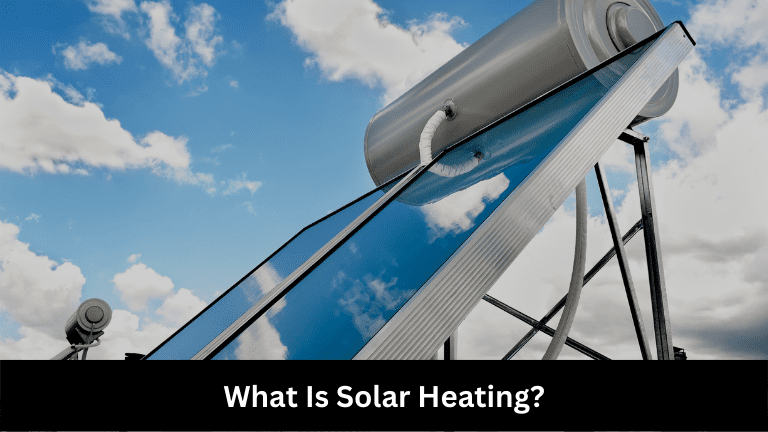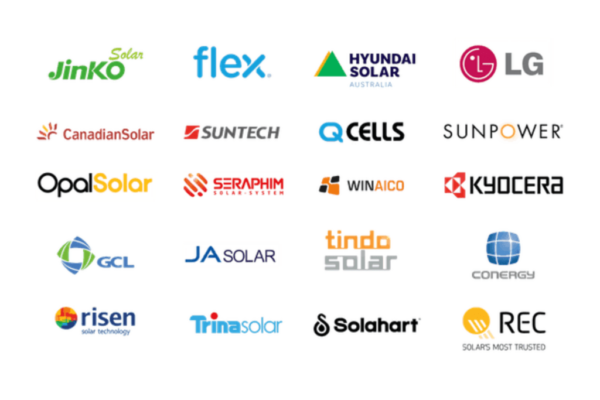The sun is a giant nuclear fusion reactor. At any given moment, up to 173,000 terawatts of energy strike the Earth from the sun. To put how much energy that is into context, the world consumes around 23,000 terawatts of energy in an entire year.
Light from the sun is energy dense. Solar cells absorb and convert this light energy into electricity that can power appliances like your laptop or mobile charger. But did you know you could also use solar for heating as well?
Solar heating is using solar energy to provide heat. It can also be used to cool as well. In this guide, we explore how.
Solar Heating Can Be Passive or Active
Passive heating relies on structural or architectural design to capture as much natural heat from the sun as possible. The simplest way to do this is by designing a building with large windows and skylights then facing the building in the direction where it will capture the most sunlight.
Another simple way to capture passive heat is through the materials we use. Certain materials absorb heat more readily where others are more heat-resistant. A common way of taking advantage of passive heating is painting a hot water tank black. The dark color makes it absorb more heat.
Active heating is the use of a mechanical device to collect and distribute solar energy as heat. This could be to provide space or water heating. The main difference between active and passive solar heating is the latter distributes heat naturally while active heating requires devices like pumps or collectors.
There are a number of active heating devices. Today, however, we want to focus on those commonly used for residential, commercial and industrial applications. These are solar water heating and solar space heating systems.
Solar Hot Water Systems
Solar hot water systems collect thermal energy from the sun which they then use to heat water. They are different from photovoltaicsystems that collect light energy which is converted to produce electricity.
Early solar water heating systems were passive systems. They were simple systems consisting of a tank painted black to better absorb thermal energy. Today solar water heater are a little more complex. A modern solar hot water typically consists of a collector, storage tank and a working fluid.
The working fluid in a solar water heater can be water, antifreeze (propylene glycol) or any heat-absorbing liquid that can act as a heat exchanger. There are two main types of water heaters:
- Evacuated Tube Collectors have a series of parallel glass tubes that absorb energy from the sun and transfer the heat to the working fluid. These are the most popular type of water heater.
- Flat Plate Collectors have a flat dark colored plate that absorbs heat and transfers it to a working fluid that circulates in tubes above the plate.
Combining solar hot water heating and solar panels can reduce your electricity bill by up to 40 percent. Take our short quiz and get free solar panel quotes.
Solar Space Heating
Solar space heating circulates heated air through a building. The air can be heated directly or indirectly. Direct heating systems use solar collector panels that absorb thermal energy and heat air. The heated air is then circulated using an HVAC outlet. Direct air space heaters heat to about 37 degrees Celsius on a sunny day.
Indirect systems are more common in colder climates where temperatures can reach freezing. Similar to solar water heaters, space heating systems use a liquid heat exchanger. Thermal energy is collected and heats the liquid exchanger.
The exchanger then circulates through a storage tank heating the water in the tank to temperatures of up to 79 degree Celsius. The hot water or heating liquid will then circulate heat through a building in one of three ways. This could be through a radiant floor, low temperature baseboard or a central hot air system.
Radiant Floor Systems
This system circulates a heated liquid through pipes embedded in the flooring. The heated liquid then radiates heat into the room. The main advantage of the system is that it is simple to implement. The biggest disadvantage to this system is that it takes longer to heat a space from a cold start than other systems.
Low Temperature Baseboards
These systems require a heated liquid of between 48 and 60 degrees Celsius. Low temperature baseboards are installed at the baseboard or at a level close to the ground to allow for heat to rise and distribute through a space more naturally.
Central Forced Hot Air Systems
In a central forced hot air system a heating coil acts as a liquid-to-air heat exchanger. The liquid heat exchanger heats up air as it is pulled through the ducts in a room.
Pros and Cons Of Solar Heating
We’ve looked at the different types of solar heating. But are they worth it and how do they compare against traditional heating and cooling methods like furnaces and HVAC systems?
Pros
- Water and space heating contribute as much as 40 percent of a domestic electricity bill. On average they take up the biggest piece of most households electricity bill. Switching to solar can provide up to 80 percent of buildings hot water needs and offset your electricity bill. Combined with solar panels, solar heating can completely eliminate your electricity costs. Take our quiz to find out how much you can save by going solar.
- Energy production is the second biggest contributor to carbon emissions. Solar can drastically reduce the reliance on gas and fossil fuel fueled electricity. Solar is a cleaner alternative energy source that can help you reduce your carbon footprint.
Cons
- Solar is dependent on the sun shining. In that respect solar energy can be unreliable if it is cloudy.
- Solar for heating typically produces less heat. It is not as efficient in terms of how much heat it can produce compared to other systems. Very often, you may have to pair your solar heating system with an alternative supplement or backup system like a furnace or heat pump.
- Solar systems have a high upfront cost. In certain cases, the cost is not justified if the system relies too heavily on a backup system like a furnace.




